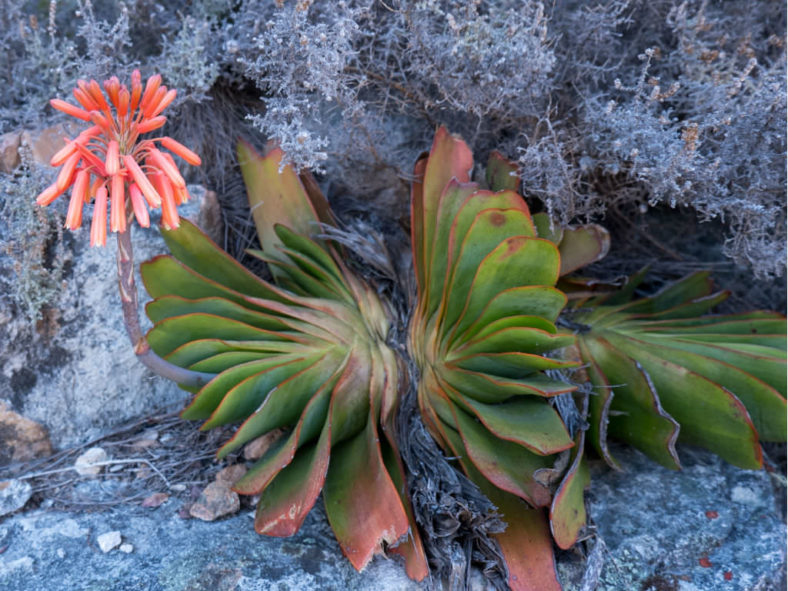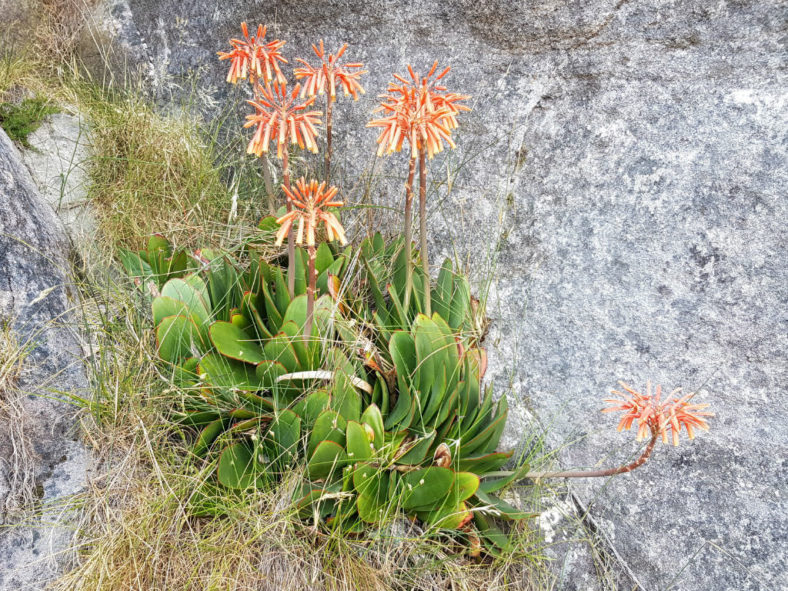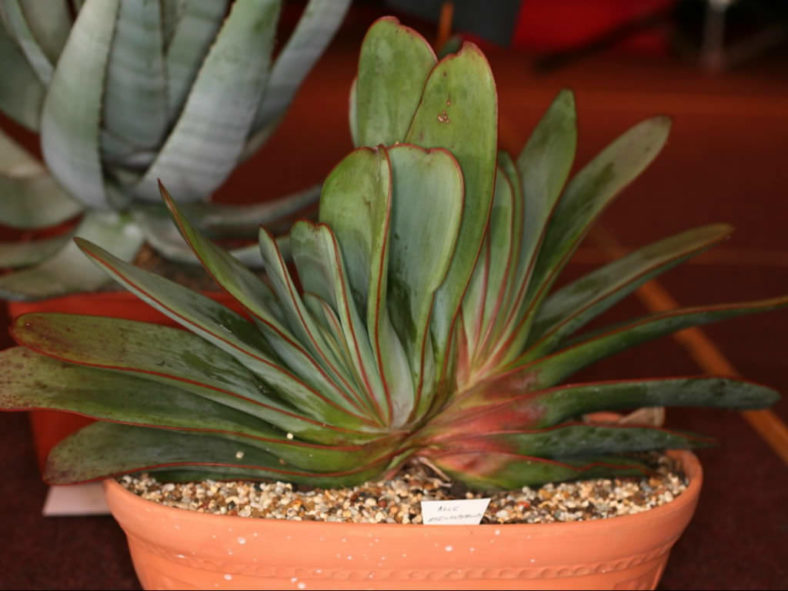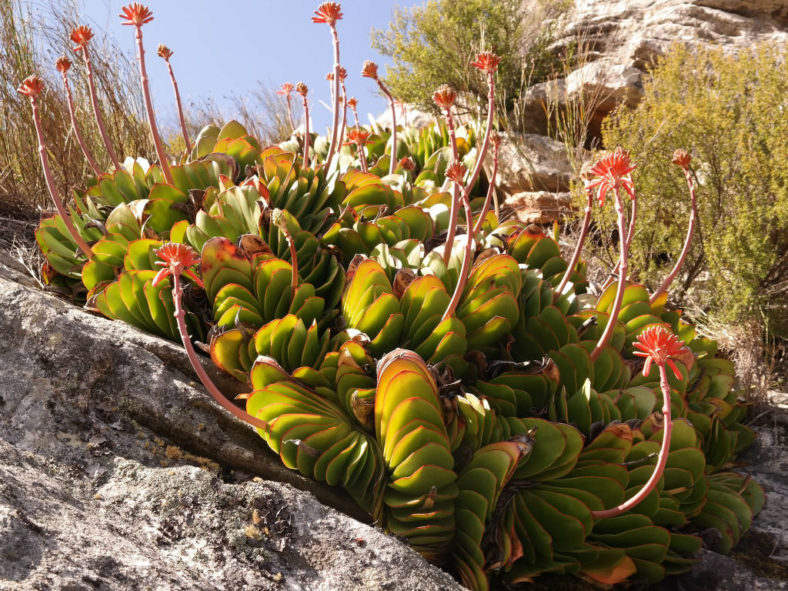Scientific Name
Kumara haemanthifolia (Marloth & A.Berger) Boatwr. & J.C.Manning
Common Name(s)
Haemanthus-leaf Aloe
Synonym(s)
Aloe haemanthifolia
Scientific Classification
Family: Asphodelaceae
Subfamily: Asphodeloideae
Tribe: Aloeae
Genus: Kumara
Description
Kumara haemanthifolia, formerly known as Aloe haemanthifolia, is a rare succulent plant with tongue-shaped leaves that grow in a fan shape. Its appearance resembles the miniature, stemless version of the tree-like Kumara plicatilis. The leaves are grayish-green with bright red margins.
The bright scarlet flowers appear in dense racemes that can reach up to 20 inches (50 cm) in height at the end of winter.

Hardiness
USDA hardiness zones 10b to 11b: from 35 °F (+1.7 °C) to 50 °F (+10 °C).
How to Grow and Care
Aloes are very forgiving plants. However, as with all succulents, Aloe must never be allowed to sit in stagnant water, and the plant should be carefully monitored to watch for signs of overwatering.
These succulents are not particularly fast-growing and will only rarely need repotting. However, in spring, repot Aloes tipping over their pots or have ceased growing. Use a fast-draining potting mix with one-third sand or pebbles. When repotting a larger plant, dividing the root ball carefully is possible. Some varieties of Aloe will send off offsets that can be potted independently.
Aloe plants need intense, bright light. They can withstand full summer sun once acclimated. In the winter, provide bright light. It prefers warmer temperatures of 70 to 80 °F (21 to 27 °C) but will survive down to 40 °F (4.5 °C). Feed with a succulent fertilizer in the summer only. Suspend feeding in the winter as the plant goes dormant.
See more at How to Grow and Care for Aloe.
Origin
Kumara haemanthifolia is native to a few high, inaccessible mountain peaks in the Fynbos habitat of Western Cape, South Africa.
Links
- Back to genus Kumara
- Succupedia: Browse succulents by Scientific Name, Common Name, Genus, Family, USDA Hardiness Zone, Origin, or cacti by Genus
Photo Gallery
Click on a photo to see a larger version.


